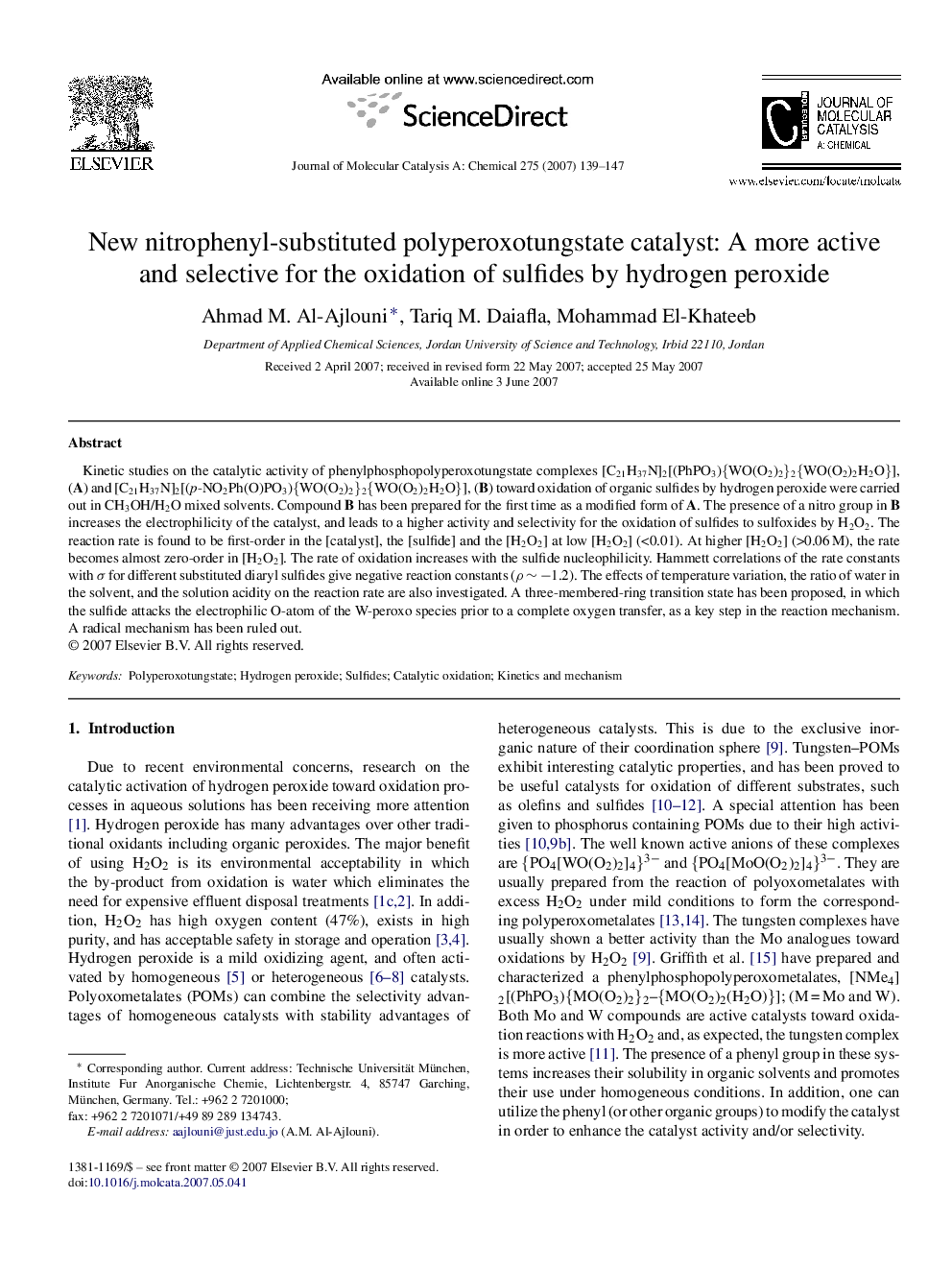| Article ID | Journal | Published Year | Pages | File Type |
|---|---|---|---|---|
| 67518 | Journal of Molecular Catalysis A: Chemical | 2007 | 9 Pages |
Kinetic studies on the catalytic activity of phenylphosphopolyperoxotungstate complexes [C21H37N]2[(PhPO3){WO(O2)2}2{WO(O2)2H2O}], (A) and [C21H37N]2[(p-NO2Ph(O)PO3){WO(O2)2}2{WO(O2)2H2O}], (B) toward oxidation of organic sulfides by hydrogen peroxide were carried out in CH3OH/H2O mixed solvents. Compound B has been prepared for the first time as a modified form of A. The presence of a nitro group in B increases the electrophilicity of the catalyst, and leads to a higher activity and selectivity for the oxidation of sulfides to sulfoxides by H2O2. The reaction rate is found to be first-order in the [catalyst], the [sulfide] and the [H2O2] at low [H2O2] (<0.01). At higher [H2O2] (>0.06 M), the rate becomes almost zero-order in [H2O2]. The rate of oxidation increases with the sulfide nucleophilicity. Hammett correlations of the rate constants with σ for different substituted diaryl sulfides give negative reaction constants (ρ ∼ −1.2). The effects of temperature variation, the ratio of water in the solvent, and the solution acidity on the reaction rate are also investigated. A three-membered-ring transition state has been proposed, in which the sulfide attacks the electrophilic O-atom of the W-peroxo species prior to a complete oxygen transfer, as a key step in the reaction mechanism. A radical mechanism has been ruled out.
Graphical abstractA new nitro substituted phenylphosphopolyperoxotungstate catalyst, (O2N-Ph)-PPW, has been prepared for the first time. It activates H2O2 with higher activity and selectivity toward oxidation of organic sulfides to the corresponding sulfoxides.Figure optionsDownload full-size imageDownload as PowerPoint slide
